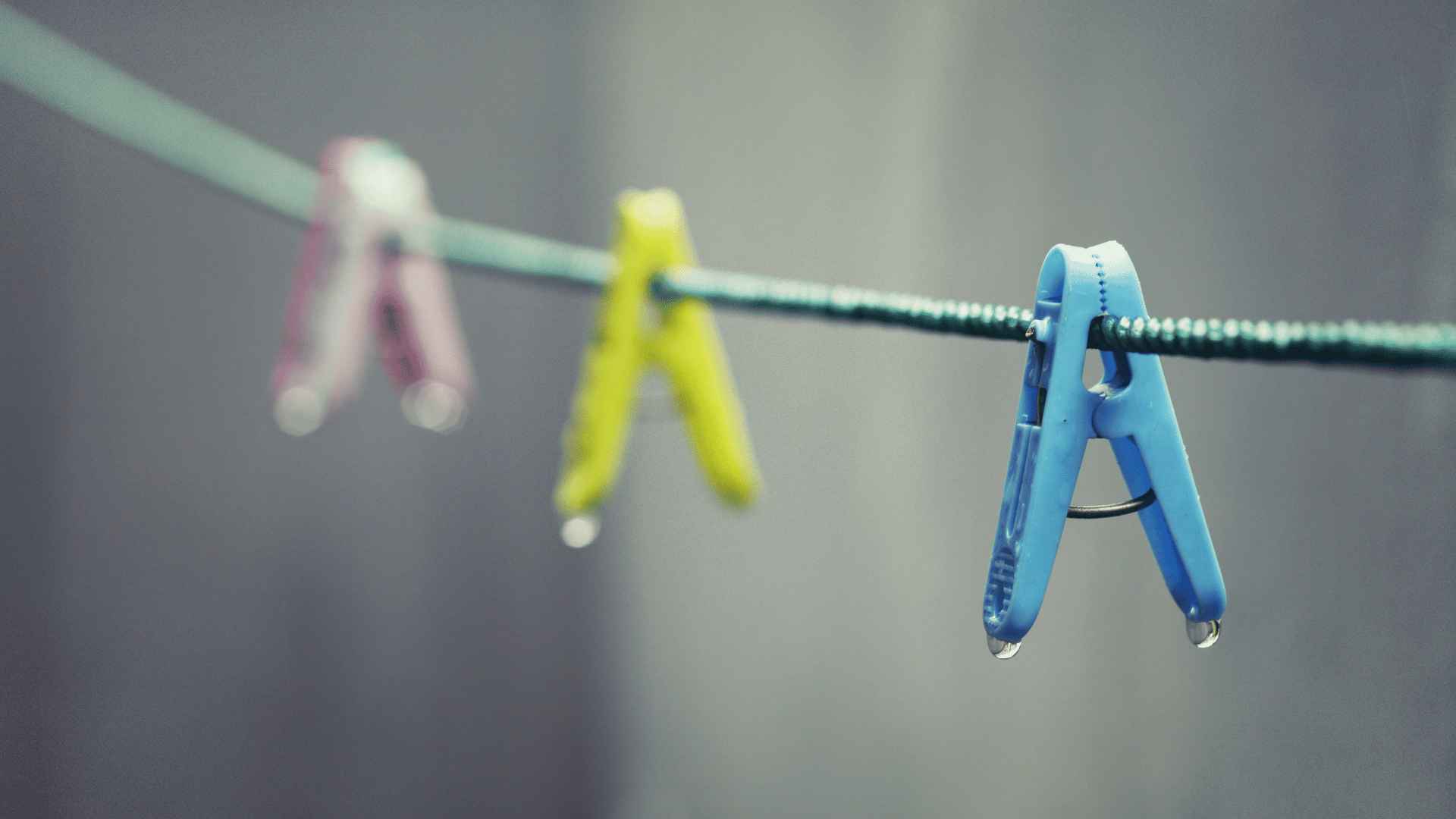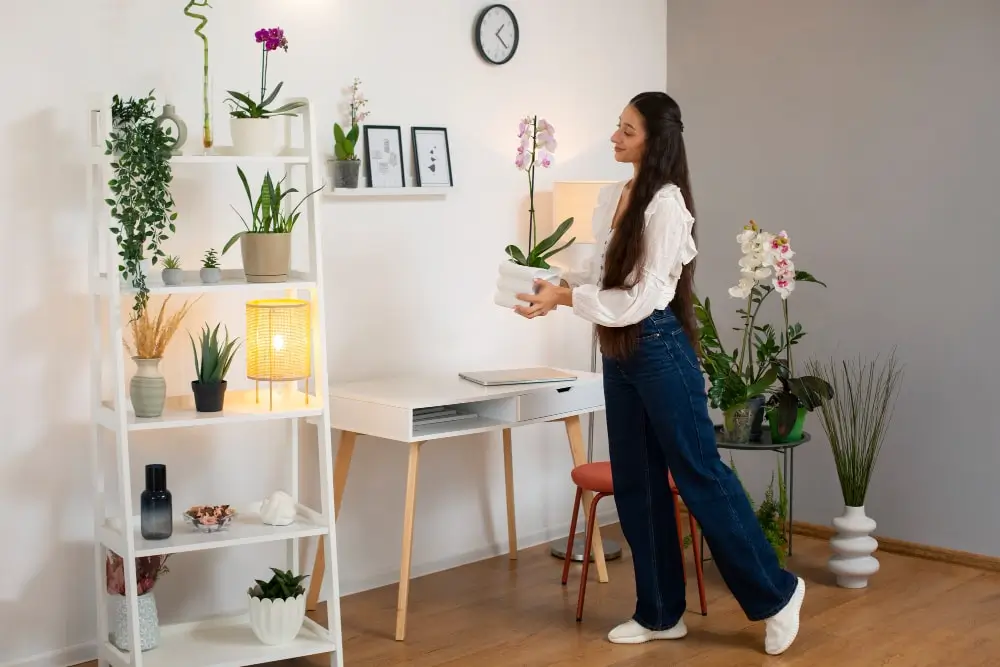The rainy season in the Philippines typically occurs from June to November, influenced by the southwest monsoon (locally known as "habagat") and occasional typhoons.
This period is characterized by increased rainfall, higher humidity levels, and frequent cloudy or overcast days. During this time, drying clothes can become quite challenging due to the persistent dampness and lack of direct sunlight. Here's a closer look at why drying clothes during the rainy season can be difficult:
1. High Humidity: The rainy season brings elevated humidity levels, which make it harder for clothes to dry efficiently. High humidity slows down the evaporation process, leaving clothes feeling damp even after extended periods of hanging.
2. Limited Sunlight: Cloudy and overcast skies are common during the rainy season, reducing the availability of sunlight. Sunlight not only helps dry clothes quickly but also helps eliminate bacteria and odors naturally.
3. Frequent rain showers: Sudden rain showers can occur at any time during the day, making it risky to hang clothes outside. Even if you manage to hang clothes during a dry spell, you might have to rush to bring them in if rain starts unexpectedly.
4. Mold and Mildew Growth: The combination of moisture and a lack of sunlight creates a favorable environment for mold and mildew growth on damp clothes. This can lead to unpleasant odors and potential damage to fabrics.
5. Limited Outdoor Space: Many urban areas in the Philippines, especially condos and apartments, have limited outdoor space for clothes drying. This means that indoor drying methods are often the only viable option.
Given these challenges, it's essential to have effective strategies on how to dry clothes on rainy days in the Philippines
Indoor Drying of Wet Clothes
During the rainy season, when outdoor drying becomes challenging, you can efficiently dry your clothes indoors by using drying racks or lines strategically placed in a well-ventilated room, like near windows or beneath ceiling fans.
Start by shaking out each piece of clothing before hanging it to remove excess water, and then arrange them on the racks, grouping similar fabrics together.
Make the most of airflow by positioning fans to circulate air around the drying area, and consider opening windows to aid in reducing humidity. Remember to periodically rotate and flip the clothes to ensure even drying on both sides.
It can be unpleasant for all our favorite garments that are drying outside as there will be less sunshine. That's true; microbes spread around the room due to the moisture that gets laden inside the room from the wet clothes that don't dry! These microbes can lead to tons of health problems, from colds and flu to sore throats and fevers.
Use your hairdryer. You can blow-dry your clothes easily with the help of a hair dryer. Remember, while heat does play a part in drying clothes, it is the air that mostly does the job. Set your hair dryer to high fan speed and low heat, and then use the dryer on the clothes indoors.
Planning your laundry schedule around the hours and periods of lower rain chances can also provide windows of opportunity for quicker drying. With a bit of patience and these indoor drying tips, you can successfully conquer the rainy-season laundry challenge in your condo.
Electric fans and dehumidifiers freshly washed clothes
If dry washing is not an option and you need to dry clothes indoors, ensure that you do it in a ventilated and airy room. You should also use a dehumidifier to remove any humid effects that may be created by the wet clothes.
Enhance the indoor drying process during the rainy season by strategically placing electric fans to optimize air circulation around your drying clothes. This promotes quicker evaporation and even drying. Additionally, consider using a dehumidifier to effectively lower indoor humidity levels.
Hang your clothes on a clothes rack or a clothes horse beside the heater, and keep them at a distance of approximately one or two meters between them. Keeping it too close to the heater won't help. The heat source from the heater should be able to flow around the rack and through the clothes (just like air).
By reducing excess moisture in the air, a dehumidifier contributes to faster drying times and helps prevent the musty odors that can arise in humid conditions.
Avoid overcrowding damp clothes indoors
Ensure efficient drying by providing ample space for each garment on the drying rack. Avoid overcrowding, as this can impede proper airflow and lead to prolonged drying times.
By allowing sufficient room between clothes, you enable better ventilation and air drying, which expedites the evaporation process and ensures your laundry dries thoroughly and in a timely manner.
Dryer machines and drying clothes indoors
If you have access to a dryer machine, take advantage of its convenience during the rainy season. Be sure to select the appropriate drying setting based on the fabric type to prevent damage.
Additionally, before using the dryer, ensure that the lint filter is clean. This simple step ensures proper airflow, direct heat, and efficient drying and maintains the machine's effectiveness.
Wring clothes properly
Upon completing the washing process, make sure to wring out your clothes thoroughly to eliminate excess water before placing them on the drying rack.
This practice significantly contributes to reducing the overall drying time. By removing as much moisture as possible, you expedite the evaporation process, allowing the clothes inside your garments to dry more quickly and efficiently.
Rotate and flip
To ensure uniform drying, remember to periodically flip and rotate your clothes while they're on the drying rack. This practice is especially crucial for larger items such as bedsheets and blankets.
By turning these items around, you promote balanced drying on both sides of the washing machine. This simple step prevents damp spots and guarantees that every part of your laundry dries evenly, leaving you with thoroughly dried and fresh-smelling garments.
Time Management
Stay proactive by consulting weather forecasts to pinpoint periods with reduced chances of rain. Seize these favorable windows of opportunity to hang your clothes outside if conditions permit.
By capitalizing on these drier moments, you can harness the power of natural air and sunlight to facilitate efficient drying. Planning your laundry routine around these forecasts enables you to optimize the drying process and make the most of intermittent breaks in rainy weather.
Proper Storage
In cases where you must temporarily store damp clothes, prioritize a well-ventilated environment. Avoid the temptation to leave them bundled up, as this can encourage the growth of mold and mildew. Instead, spread out the damp clothes in an area with good airflow.
This precaution helps prevent unpleasant odors and potential damage to the fabrics. Ensuring that air can circulate around the damp garments reduces the risk of moisture accumulation and maintains their freshness until you can resume the drying process.
Use drying aids
Enhance your indoor drying process with some ingenious aids. Incorporating dryer balls, fabric softener sheets, or even crumpled aluminum foil can significantly improve airflow and minimize static cling, ultimately leading to quicker drying times.
These additions create separation between clothes, preventing them from clumping together and hindering airflow. By introducing these simple solutions, you'll experience more efficient drying while ensuring your clothes emerge from the drying process soft, fresh, and static-free.
In spite of the obstacles presented by the rainy season, adept planning coupled with a blend of indoor drying techniques can empower you to triumph over the challenges and efficiently dry your clothes.
By judiciously selecting the right drying locations, utilizing tools like fans and dehumidifiers, and implementing rotation and proper spacing, you can successfully navigate the damp conditions.
Remember, with strategic approaches and a dash of patience, you can confidently tackle rainy days and ensure your clothes emerge fresh and dry throughout the rainy season in the Philippines.
For more information on Vista Residences, email [email protected], follow @VistaResidencesOfficial on Facebook, Twitter, Instagram, and YouTube, or call the Marketing Office at 0999 886 4262 / 0917 582 5167.










